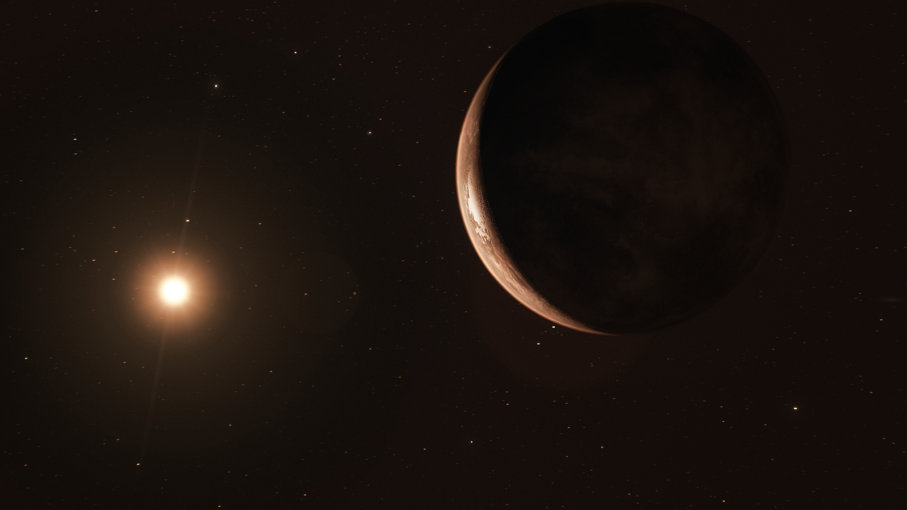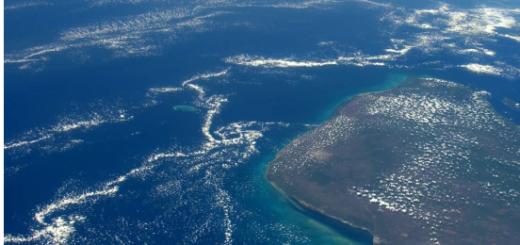Barnard’s Star B May Host Primitive Life, Kind of Like Europa

The second-closest exoplanet beyond our solar system may sound like a cold, alien and inhospitable place, but what if it’s not? What if, as new research suggests, there are pockets of habitable environments deep below its icy surface, assuming it can produce heat from its core?
Discovered late in 2018, Barnard’s Star b is like none of the planets in the solar system. With a mass three times that of Earth, this enigmatic exoplanet is known as a “super-Earth,” a likely rocky planet that occupies a mass range between Earth and the smaller gas giants, like Neptune. Exoplanet-hunting missions like Kepler have found that super-Earths are common throughout the galaxy, so Barnard’s Star b is more than just a curiosity, it could become the key for us to understand how they formed, what they’re made of and, most conspicuously, why the solar system doesn’t have one.
After a painstaking search through two decades of spectroscopic data of Barnard’s Star, astronomers announced the new world’s discovery in November. They found a 233 day “wobble” that indicated an exoplanet was located at approximately the same distance at which Mercury orbits our sun, very slightly tugging at its star as it orbited. But, as the star is a low-mass and dim red dwarf, the planet’s orbit puts it beyond the star’s “habitable zone” and into its “snow line.” If Barnard’s Star b has any water on its surface, it will be frozen, and not conducive to supporting life (as we know it).
However, according to new research presented at the 233rd meeting of the American Astronomy Society (AAS) in Seattle, Washington, on Jan. 10, 2019, should this super-Earth be producing its own heat in its core, basic life-forms may find a way to eke out an existence.
“Geothermal heating could support ‘life zones’ under its surface, akin to subsurface lakes found in Antarctica,” said astrophysicist Edward Guinan, of Villanova University, in a statement. “We note that the surface temperature on Jupiter’s icy moon Europa is similar to Barnard b but, because of tidal heating, Europa probably has liquid oceans under its icy surface.”
Astrobiologists have long been fascinated with Europa. Even though it orbits Jupiter well outside our sun’s habitable zone and has a very obvious thick-ice crust, through tidal interactions with the gas giant, its core produces heat that maintains a subsurface ocean in a liquid water state. Decades of observations of the moon also have revealed that the ocean may have sufficient quantities of oxygen and nutrients to support a hypothetical marine ecosystem.
Barnard’s Star b is much larger than Europa and cannot have the same degree of tidal heating experienced by the Jovian moon, but should it have a large and hot iron/nickel core, Guinan and his co-investigators suspect that its geothermal activity could nurture primitive life-forms.
Alas, we are getting ahead of ourselves. Barnard’s Star b may well be habitable, but currently we only know its mass and orbital period around the star. We know nothing about its composition, atmosphere (if it even has one) or physical size. It will be undoubtedly cold, as the star only generates 0.4 percent of the radiant power of our sun, but does it possess water ice? Does it have geothermal activity? For now, we don’t know, but there is hope.
IEEC/SCIENCE-WAVE, GUILLEM RAMISA
Barnard’s Star is only six light-years from Earth, so it’s conceivable that a future generation of powerful telescopes will have the observing power to study the alien world. According to the researchers, such observations will shed light on the nature of the planet’s atmosphere, surface and potential habitability.
“The most significant aspect of the discovery of Barnard’s star b is that the two nearest star systems to the sun are now known to host planets,” said Engle in the same statement. “This supports previous studies based on Kepler mission data, inferring that planets can be very common throughout the galaxy, even numbering in the tens of billions.”
The closest exoplanet to Earth is Proxima Centauri b, an Earth-sized world that orbits its red dwarf star inside the habitable zone, the distance surrounding a star that could allow a planet to possess liquid water on its surface. On paper, this sounds like a fantastic location to seek out alien life, but Proxima Centauri is an angry little star, known for its violent flares that would irradiate any planet that orbits too close. Barnard’s Star b orbits its red dwarf farther away and, if life can find a way under its surface, could be shielded from any ionizing radiation.



 Creators of mankind
Creators of mankind Description of “Tall white aliens”
Description of “Tall white aliens” Where they came from?
Where they came from? About hostile civilizations
About hostile civilizations The war for the Earth
The war for the Earth “Tall white aliens” about eternal life
“Tall white aliens” about eternal life Video: “Nordic aliens”
Video: “Nordic aliens” Aliens
Aliens Alien encounters
Alien encounters The aliens base
The aliens base UFO
UFO Technology UFO
Technology UFO Underground civilization
Underground civilization Ancient alien artifacts
Ancient alien artifacts Military and UFO
Military and UFO Mysteries and hypotheses
Mysteries and hypotheses Scientific facts
Scientific facts


















